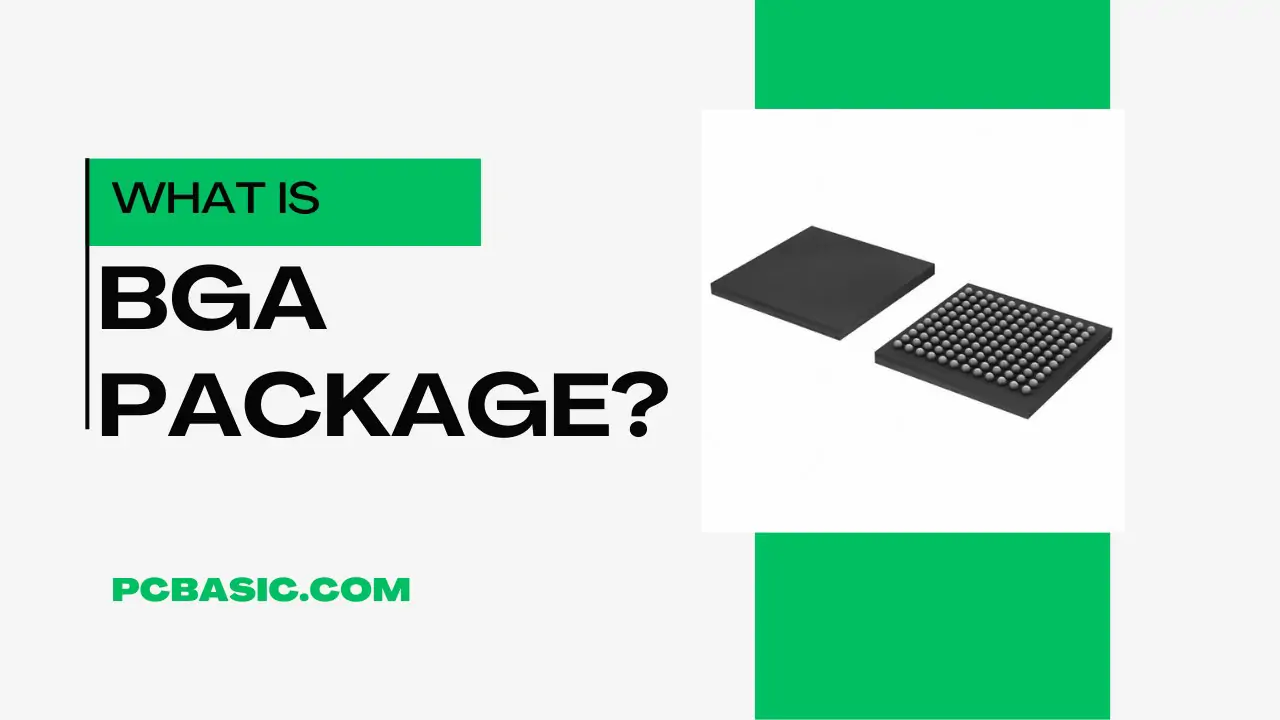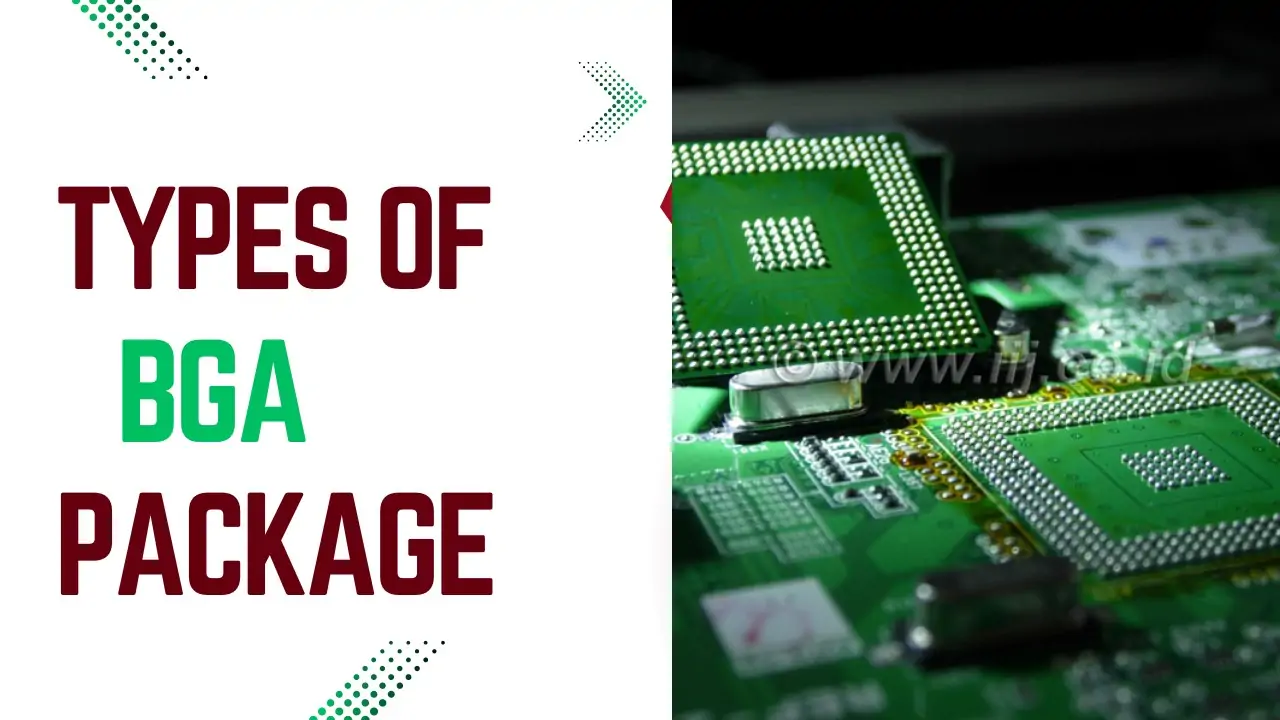Global high-mix volume high-speed Shenzhen PCBA manufacturer

Ru
9:00 -18:00, Mon. - Fri. (GMT+8)
9:00 -12:00, Sat. (GMT+8)
(Except Chinese public holidays)





Global high-mix volume high-speed Shenzhen PCBA manufacturer

Ru
9:00 -18:00, Mon. - Fri. (GMT+8)
9:00 -12:00, Sat. (GMT+8)
(Except Chinese public holidays)





HomePage > Blog > Knowledge Base > What is Ball Grid Array (BGA) Packages?

Today, we will talk about something enjoyable and a bit more advanced in terms of PCB layout: a quick intro to the BGA package. If you're a new designer, the idea of a BGA may seem overly complex, but it's essential for mounting highly functional components in a single package.
Many powerful components get mounted as BGAs, so knowing how to work with them in your PCB layout is essential. Let's get into it.
What is bga meaning? So, a ball grid array is generally a square-shaped component, though it can be rectangular, with various balls arranged in a regular pattern. These or solder balls are on the bottom of the element. During assembly, you place the BGA onto the footprint, heat it, the solder melts, and it adheres to the board.
Refrain from oversimplifying it; that's the basic idea behind these components. Sometimes, you'll see missing balls in the pattern, so remember. BGAs need specific footprints in your PCB layout, and you also need to determine how to route traces into them.
This depends on the pad size and the pitch or distance between the balls. Coarse-pitch BGAs have larger pitches, typically around 1mm to 5mm, while fine-pitch BGAs have pitches less than 0.5mm.

Ball Grid Array (BGA) packages are one variety of surface mount technology for integrated circuits (IC). Unlike traditional packages with pins sticking out the sides, BGAs have solder balls directly attached to their bottoms.
This enables a smaller footprint, higher pin count, and better electrical performance. Nonetheless, there are different kinds of BGA packages optimized for various requirements.
Plastic Ball Grid Array (PBGA):
Substrate: PBGA uses an economical laminate material, typically consisting of a resin such as bismaleimide triazine (BT).
Assembly: The substrate is where the die (or bga chip) is attached face up. It is electrically connected with wires connected from the die to the substrate. Finally, a plastic mold spews out the total assembly to protect it.
Tape Ball Grid Array (TBGA):
Substrate: Instead of rigid laminates, TBGAs use thin, flexible tapes as substrates. This tape often consists of polyimide film with an etched conductive metal layer.
Assembly: As in the PBGA case, this die attaches to the tape substrate with its face down. For connections, they use conductive bumps or solders. Lastly, solder balls populate the exposed bottom pads.
Ceramic Ball Grid Array (CBGA):
Substrate: CBGAs employ ceramic substrate, which has superior thermal conductivity than plastics or tapes do – these ceramics could usually be alumina-based substances like aluminum oxide (Al2O3).
Assembly: The die is placed face-up on a ceramic substrate. This process includes collapse bga chip connection (C4) similar to PBGAs. The technique employs pressure-induced formation of conductive pillars. This technique is incorporated to interconnect the die with substrate pads. Finally, solder balls are attached to the exposed metal pads on the bottom.
Flip-Chip Ball Grid Array (FCBGA):
Substrate: FCBGAs are similar to CBGAs. However, they have one prominent difference. These include flipping the die over and mounting it directly upon the substrate, i.e., face-down attachment. Wire bonding was not used in this case, thereby shortening electrical path length and improving signal integrity.
Assembly: The underfill material is used both for mechanical support of the die onto the substrate and moisture protection. Solder balls are then attached to the exposed metal pads on the bottom side of the die.
Micro Ball Grid Array (MBGA):
Substrate: MBGAs employ a significantly reduced and tiny substrate, which is usually made of polyimide film similar to TBGAs. The package size is the same as the die, with an ultra-miniature footprint.
Assembly: A conductive bump or solder is used to attach the die face-down onto the tape substrate. As a result, assemblies have tight ball pitches (solder ball spacing), necessitating precise assembly techniques.
Benefits: MBGAs are the tiniest possible package size and, therefore, can be applied in highly miniature devices like mobile phones and wearable gadgets.
Drawbacks: Miniaturization and tight pitches between balls make these BGAs challenging to handle or assemble.
Fine-Pitch Ball Grid Array (FBGA)
The substrate of FBGAs, which are usually made from the same material as PBGAs and CBGAs, which are laminate or ceramic substrates, have a differentiating factor in their solder ball pitch.
Assembly: FBGA assembly is just like other BGA types, but these have a much smaller spacing between balls, i.e., solder ball pitches. So you can place many pins in a limited area.
Advantages: FBGAs are an excellent choice for designers balancing small package sizes and high pin count. They work well in applications requiring many connections within a limited space.
Disadvantages: To achieve such a fine pitch, these components' manufacturing and assembling methods should be exact. Thus, there is increased cost relative to regular BGA packages, making inspection or rework problematic due to the tight spacing involved.
Thermally Enhanced Ball Grid Array (TEBGA):
Substrate: Materials employed in TEBGAs range from laminate to ceramics blended. One notable difference is the inclusion of additional heat dissipation structures.
Assembly: Manufacturing processes might differ depending on the TEBGA type; however, most designs involve using thicker copper layers on substrates for better heat spreading or placing heat spreader plates above packages.
Advantages and Disadvantages of BGA
Advantages of BGA Packages:
Smaller Footprint: The BGA package eliminates the need for protruding pins compared to traditional leaded packages. It allows for a more compact design for miniaturized BGA electronics such as smartphones and laptops.
Higher Pin Count: The solder balls in BGAs are spread across the entire bottom of the package; hence, they can accommodate many more connections. Having such BGA chips is necessary because they have multiple inputs and outputs, therefore needing many input-output connections.
Improved Electrical Performance: Better signal integrity and higher operating speeds result from a shorter electrical path length. It occurs between the die (BGA chip) and the PCB (printed circuit board) due to the directly connecting solder balls. This is especially useful in high-frequency applications.
Enhanced Heat Dissipation: Depending on their type, some BGAs have improved thermal performance. For example, materials are used by Ceramic BGAs (CBGAs) and Thermally Enhanced BGAs (TEBGAs). This allows heat transfer from die to PCB, resulting in the prevention of overheating.
Lower Inductance: The BGA solder ball layout has a lower overall inductance than the leaded packages. For high-frequency circuits, this lowers signal distortion, thus improving system performance.
Disadvantages of BGA Packages:
Manufacturing Complexity: Unlike traditional leaded packages, the BGA packaging process, especially when fine-pitch balls or complex thermal management features are involved, requires more control. It would help if you had sophisticated equipment during assembly. This also increases manufacturing costs.
Inspection and Rework Challenges: Visual inspection of BGA package solder joints is complex because they are underneath the package. This also involves rework or repair, given that desoldering faulty BGA components is more complicated than changing leaded parts.
Susceptibility to Stress: Thermal expansion and vibration results in mechanical stress on BGAs. If not properly designed and assembled, this might eventually fail in solder joints.
Limited Reusability: Generally, once BGAs are soldered onto a PCB, they are not intended to be easily removed and reused. This is a disadvantage when frequent component replacement, for example, during the prototyping process, might be required.
Environmental Concerns: Some BGA packages, particularly older types, carry lead in the solder balls. On the other hand, environmental concerns have led to the development of lead-free solders, which come with challenges such as higher melting temperatures and the potential for solder joint brittleness, leading to implications in terms of the mechanical behavior of these materials.

PCBasic offers a complete PCB assembly service that includes BGA parts. X-ray inspection is likely also used as part of their QC measures to verify correct BGA solder joint formation.
X-ray inspection reveals defects in the BGA interconnections, such as voids, cracks, or insufficient solder. By doing this, problems like these can be avoided early, which could fail electrical connections and non-operation of final assembly.
Footprint Design:
Accuracy: Make sure to fix the BGA package footprint on your PCB layout correctly. You must follow the manufacturer's datasheet specifications. This will include solder ball pitch (distance between balls), pad diameter, and stencil aperture size.
Solder Mask: Define a solder mask opening slightly smaller than the solder ball pad. Solder maks stop overflow of solder during assembly.
Stencil Design: Collaborate with your PCB manufacturer to determine the appropriate stencil thickness. Subsequently, aperture size for correct deposition of solders paste.
Thermal Relief Vias: Consider using thermal relief vias around BGA pads. This will enhance heat dissipation from the package.
Layer Stackup:
Signal Integrity: Pick an appropriate layer stack-up with enough signal layers and controlled impedance profiles for high-speed signals to maintain signal integrity. When routing BGAs, careful planning is often necessary to avoid signal crosstalks and reflections.
Power and Ground Planes: Provide separate power and ground planes for stable power delivery and noise reduction, especially when dealing with high-power BGAs.
Via Management: Place vias strategically to minimize signal path length while avoiding congestion beneath BGA. Via-in-pad technology is a reasonable consideration for efficient routing from BGA to inner layers.
Routing Strategies:
Fanout Pattern: A controlled fanout pattern should be used when transitioning from fine-pitch BGA balls onto wider traces on the surface layer of the PCB. Examples include dog-bone or teardrop shapes commonly used.
Escape Routing: Plan escape routing paths efficiently for BGA package signals. It typically involves prioritizing critical signals and allocating routing channels based on their function and layer assignment.
High-Speed Considerations: For high-speed signals, ensure there is no impedance discontinuity within the routing path by maintaining a constant impedance across it, minimizing sharp bends or length mismatches; consider using differential routing techniques for critical differential pairs
Design for Manufacturability (DFM):
Component Placement: Components should be strategically placed on board to avoid obstructing X-ray inspection and to allow sufficient routing clearances around the BGA.
Stencil Design: Ensure your PCB manufacturer checks your stencil design to ensure that it deposits solder paste properly for all BGA pads.
Assembly: The size and pitch of the BGA package must be a factor when designing the PCB for automated assembly processes. There should also be enough space for pick-and-place equipment and proper handling of components.
Design for Testability (DFT):
Test Points: Dedicated test points should be included for BGA signals for electrical testing after assembling.
Boundary Scan (JTAG): If available in the BGA, use Boundary Scan (JTAG) capabilities, allowing in-circuit tests and fault detection.
When routing into a BGA package, counting the number of signal layers needed and interleaving them with plane layers for controlled impedance is essential. As pitches get finer, the pad and via sizes need to shrink, and eventually, micro vias or via-in-pad techniques are required. Always refer to data sheets and consult with your fabricator for recommendations on pad sizes and solder mask openings.

Assembly Enquiry
Instant Quote